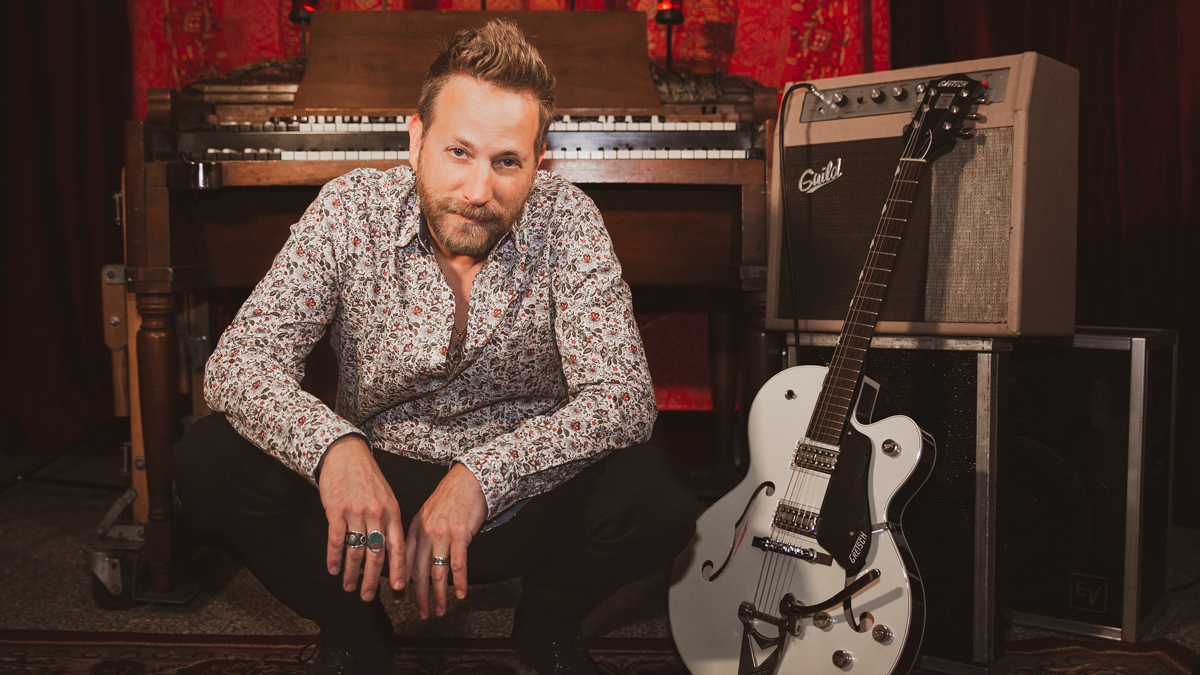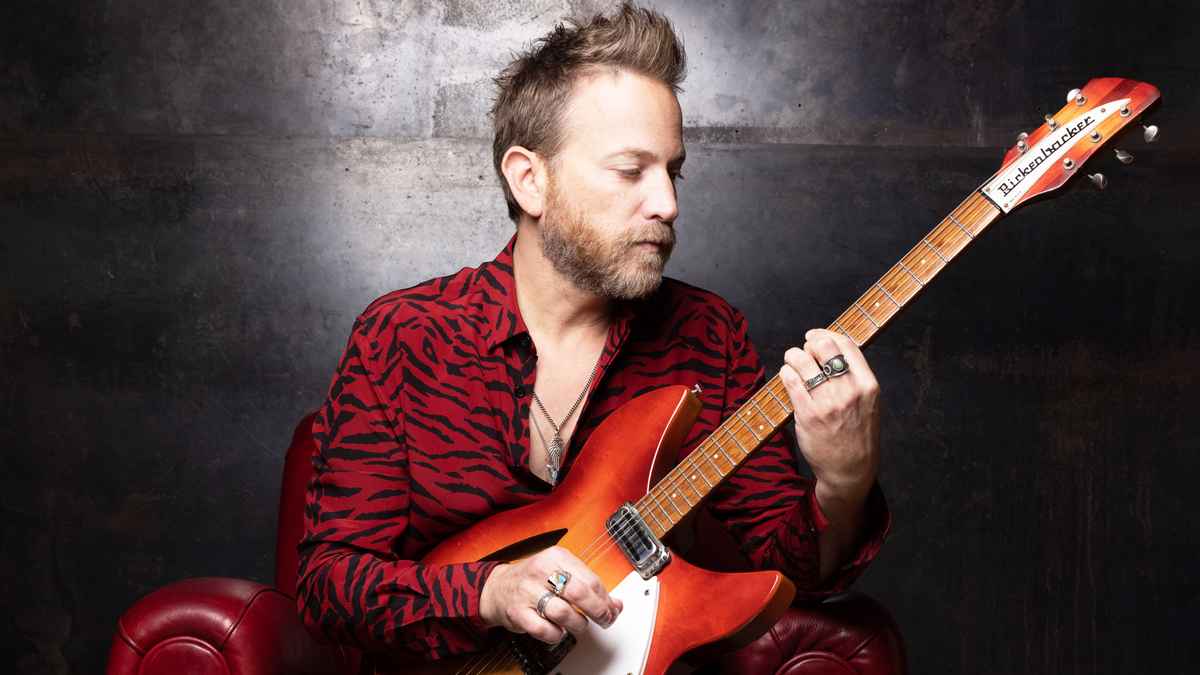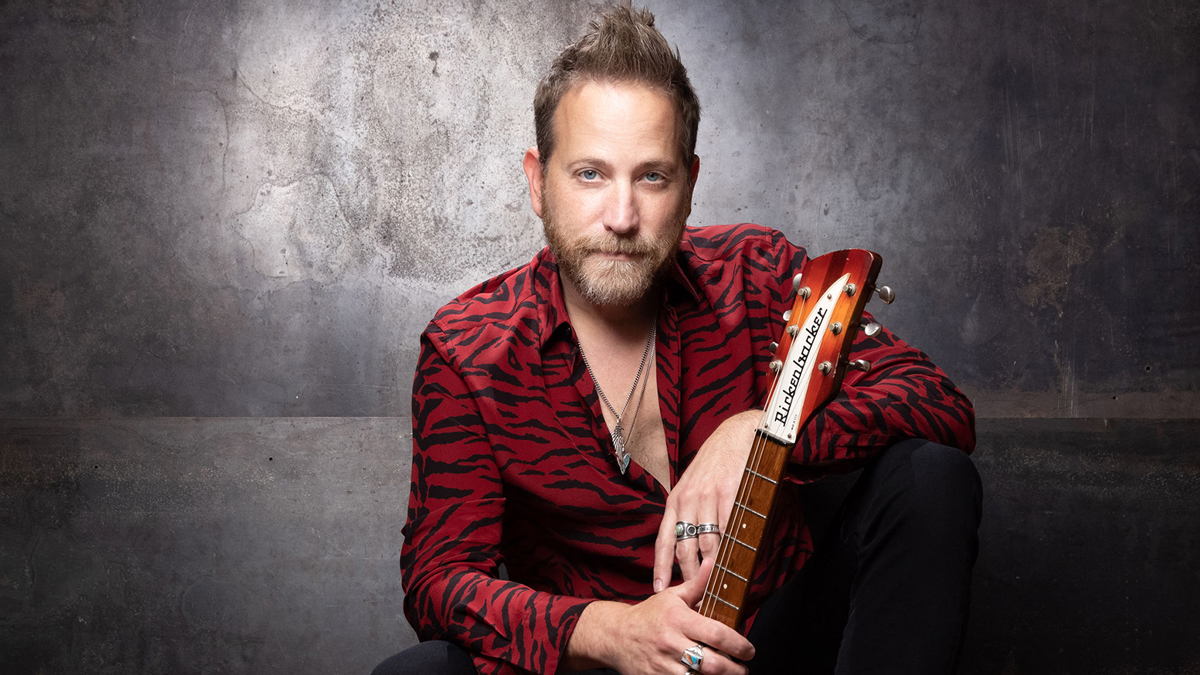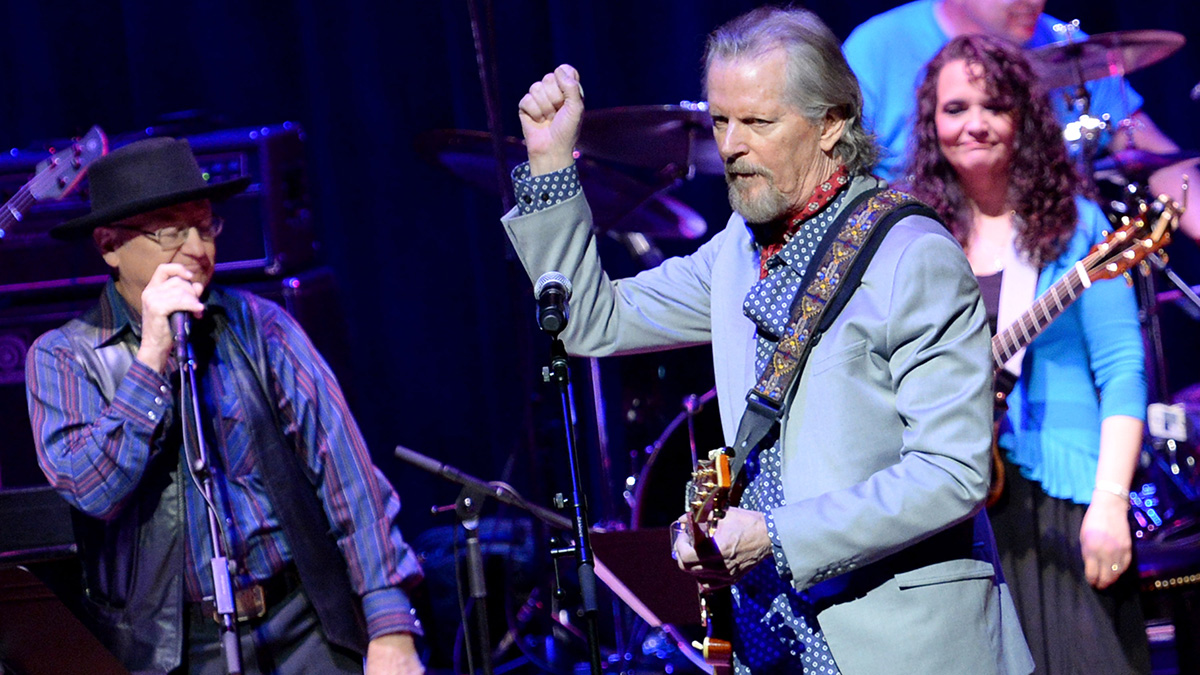Adam Shoenfeld: "As a kid, I exhausted technique to where, as a session musician, I started playing for the song"
One of Nashville's most in-demand session players on how he stretched his wings on new album All the Birds Sing, and the lessons learned on his path from hotshot shredder to country gun-for-hire

It was purely coincidence that Adam Shoenfeld found himself with an album titled All the Birds Sing that closes with Norwegian Wood (This Bird Has Flown). Even his cover of the Beatles classic happened by chance during downtime with a guitar that had just returned from the shop. When the tracks were complete, the songs were sequenced and the pieces all fell into place, as they often seem to do in his world.
Shoenfeld was born on Long Island and grew up in Blairstown, New Jersey, on a steady musical diet that included Peter Frampton’s Frampton Comes Alive, the album that made him want to play guitar. He was four years old when his parents bought him his first instrument.
By age 14, he was writing songs and playing rock, blues, and jazz in several projects, including the Nathan Lee Band, with whom he made regular treks to New York City to perform at hotspots like The Bitter End. That band became his ticket to Nashville in 1994, thanks to a management deal and the promise of success. They broke up four months later, but Shoenfeld stayed.
He waited tables for a stretch before landing a “life-changing” job at Woodland Studios, where he answered phones, made coffee, prepared bagels, and kept the kitchen in order. The studio owner soon incorporated him into the house band, where he played on demos and learned invaluable skills about being a session musician.
He eventually partnered with Kenny Alphin to form the rock band LuvjOi; when Alphin and John Rich became Big & Rich, they recruited Shoenfeld to play guitar on their debut album, Horse of a Different Color, featuring the 2004 hit Save a Horse (Ride a Cowboy). He became their touring guitarist when they opened for Tim McGraw.
10 years ago, when McGraw restructured his own touring band, Shoenfeld got the call and an ongoing gig. Throughout all of this, he has produced albums, played on countless Nashville sessions – over 300 albums and 45 Number 1 songs – and written and co-written for other artists.
He played electric guitar on the song Hicktown on Jason Aldean’s 2005 self-titled debut, and since then has been studio bandleader and lead guitarist on all of Aldean’s albums. He has also earned seven nominations from the Academy of Country Music as Guitar Player of the Year. That’s only scratching the surface of his credits.
Get The Pick Newsletter
All the latest guitar news, interviews, lessons, reviews, deals and more, direct to your inbox!
Shoenfeld stays busy – by choice and through opportunities. In addition to Aldean, McGraw, and session work, he plays in a pop/rock duo, SunKat, with his wife, singer/songwriter/producer Katie Cook, and with rock/punk trio Digital Brains. That band, on hiatus the past couple of years, is back in the public eye thanks to a reboot of their socially charged We Could, written and recorded with Cowboy Troy (Troy Lee Coleman) during a Big & Rich tour and featuring Chuck D on vocals.
All of this leads to All the Birds Sing (out now via Lozen Entertainment Group), recorded in his home studio during pandemic lockdowns, and co-produced by Shoenfeld and Cook. The album, on which he plays most of the instruments, showcases his deep-rooted Beatles influences not only on Norwegian Wood, but also throughout the vocals, guitar sounds, and arrangements.
“For me, playing guitar means doing what it takes for the artist you’re playing for,” he says. “All of my projects are about the song and delivering it with my voice. If there's a solo here and there, live, I’ll extend it more than I do on recordings. I'm going to change that on my next solo record. I think I shocked people with this one because it doesn't have a lot of in-your-face guitar. The next record is going to come out and slap ’em!”
You’ve amassed an arsenal of songs over the years. Why a solo album now?
“Around seven years ago I started Digital Brains, and then I added SunKat. I was still writing and creating for those projects, and writing some of these songs a year before that. I was going to make a solo album, because I was writing songs that didn’t fit with either of those projects. It was stuff I wanted to say personally and stylistically that was more up my alley, as eclectic as that can be.
“Then quarantine happened and it gave me extra time to sit in my basement every day and work on it. So I’ve always had it in me, in the last five or so years I started letting it come out, and it worked up to this. I’ve written hundreds of songs, but this all started in mid-2019.”
When you've played on hundreds of sessions and worked for years as a touring musician, what are the lessons learned about (a) properly translating other artists’ material and (b) bringing that into your own recordings?
“I think what got me here is doing my own thing. I think what gets people through the door is being a little original. The days I come out of the studio feeling like I did my best are the days that I feel completely free and left-brained in my creativity. Yes, you want to do the things you know are called for, as far as guitar parts go. But at the same time, you don't get pizzazz from just playing the same old stuff. If I'm playing something in the studio that feels like I've played it many times before, unless it's absolutely 'Hands down, it's got to be this,' I find something else.
“As far as playing live for other people, it's important to honor the record and honor other players’ parts. You take liberties where you can. I love doing it, and honestly, when I'm doing my own stuff, I feel like the worst guitar player in the world. When I'm writing songs or I'm onstage singing them, it becomes about my voice at that point. I’ve even thought about having another guitar player to do heavy lifting. But I know that's just me getting in my own head. So it's definitely interesting. It's a little different for each scenario.”
Which guitars did you use on this album?
“I used my Rickenbacker a lot. I'm a huge fan of the Beatles, Tom Petty, anything jangly. And I had just gotten a Broadcaster reissue from Fender. There's a lot of Gretsch, my Rickenbacker, and that Broadcaster on this record, and a little Vox Cambridge amp. I used it quite a bit, as well as a Fender Vibrolux Reverb. Those I usually send to a 1x12 Fender Deluxe cab.
“There’s not a lot of fills or effects on the guitars. I was just trying to get some really good, rootsy-feeling stuff down. Most of the solos are slide, and those were played on one of my three Gibson Melody Makers.”

With some 50 guitars in your collection, how did you make those decisions?
A lot of it was based on feeling. There are some parts that I just said, 'I'm going to do this,' and I grabbed what was next to me. There is a little bit of that. It wasn't very calculated, other than I know that the Rickenbackers and Gretsches speak to me and have that 'squishy thing', you know? It's squishy. It's vintage. It just feels right. I don’t know. That's a hard question. The hardest questions are about music!”
Do the choices sometimes change from writing to recording?
“In writing it does, because I may come up with an idea because I'm playing a certain guitar that lends me to play a certain part. I didn't plan on recording Norwegian Wood. I had just gotten my old Gibson LG-1 back from Glaser Instruments, I was playing it, and, 'Oh, it feels so good.' I started playing Norwegian Wood, and I started to hear in my head a heavier take on it. I was actually thinking Digital Brains heavy.
“I pulled up a click track, ran into the guitar booth, and recorded the guitar. Then I went into the drum booth and started playing drums. Before I knew it, I had covered Norwegian Wood. To me, it's the last song on the record, even though there’s that little tidbit, Say a Word, after it.
“So, yeah, I think guitars often determine what kind of song I'm going to write. As a guitar player for other people, definitely a song will tell you what kind of guitar you play. When it's my own stuff, I tend to be a little more, 'Let's see what this does. It's right here. Let's grab it.'”
How does your approach, your attack, change from guitar to guitar?
“When I grab my Melody Maker, I'm going to be slamming power chords and real hard-rock riffs, or solos that need to be soaring and sustain, because those Melody Makers have the humbuckers in them. When I'm getting a sound in the studio, I usually grab the Melody Maker because I know what that sounds like with my Bassman head, which is my main go-to in the studio. The Gretsch tends to be that more flowy, jangly, floaty sound. So different approaches, absolutely.
“I've done a lot of power chords and heavy solos on my hollowbody Gretsch 6120. But, for the most part, the way the guitars are designed, even though it's a heavier guitar, the Gretsches feel lighter, like you have to be a little easier on them. I definitely feel like I am playing with less attack on my right hand, my picking hand, for sure. I guess I feel like a Melody Maker can take it. It's a little more of a slab!”

How has your technique changed, and how much of that is the result of going from rock guitarist to now mostly country guitarist?
“I worked so hard on technique when I was a kid. I was listening to Yngwie and Vinnie Moore. I was bouncing tracks on a Tascam Porta One Ministudio. I would bounce and bounce until I had, like, 20 tracks of harmonized two-hand tapping and sweeping. I exhausted technique to where, when I started playing here as a session musician, I started playing for the song.
“I almost feel – especially now with social media, where you can see all these people with amazing technique – that I kind of let technique go away. It's taken a backseat to just playing. Maybe the key to playing well for a song is you play for the song and the technique follows.
“Granted, these people on social media probably took five or 10 takes of a song until they got the perfect one to post, and they really practiced that one thing. Regardless, it's amazing, but I just want to say, don't forget to play for the song. Maybe that's because I feel like I can't do that shredding anymore! I know I can. It's just that I don't have to. I feel like you don't have to be a shredder to be successful.”
- All the Birds Sing is out now via Lozen Entertainment Group. Head to AdamShoenfeld.com for more information.
Alison Richter is a seasoned journalist who interviews musicians, producers, engineers, and other industry professionals, and covers mental health issues for GuitarWorld.com. Writing credits include a wide range of publications, including GuitarWorld.com, MusicRadar.com, Bass Player, TNAG Connoisseur, Reverb, Music Industry News, Acoustic, Drummer, Guitar.com, Gearphoria, She Shreds, Guitar Girl, and Collectible Guitar.
“I didn’t think anybody would believe I got it from George Harrison. I figured they’d call me a liar”: Vintage guitar guru Norman Harris names the 5 most memorable guitars that have come through Norman's Rare Guitars
“What blew me away was that everyone wanted the curly maple top. People were calling, saying, ‘I’ve got to have the bird inlays’”: Paul Reed Smith on raising the Standard 24, finally cracking the noise-free guitar and why John Sykes is a tone hero




![[from left] George Harrison with his Gretsch Country Gentleman, Norman Harris of Norman's Rare Guitars holds a gold-top Les Paul, John Fogerty with his legendary 1969 Rickenbacker](https://cdn.mos.cms.futurecdn.net/TuH3nuhn9etqjdn5sy4ntW.jpg)





